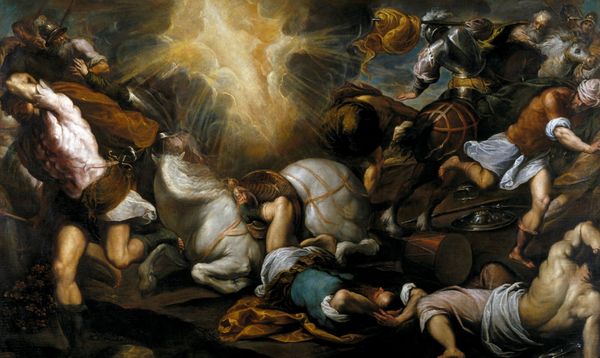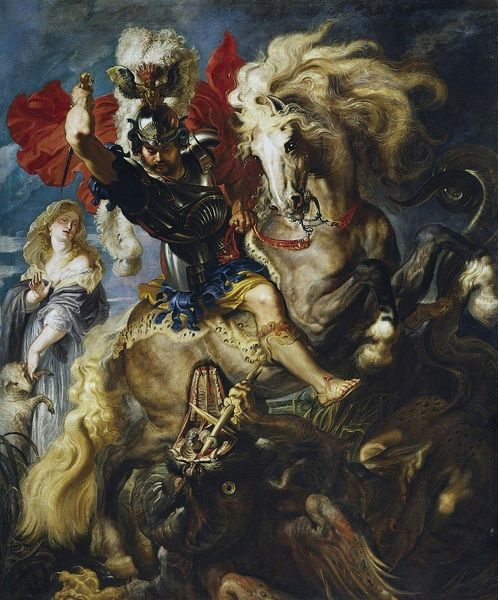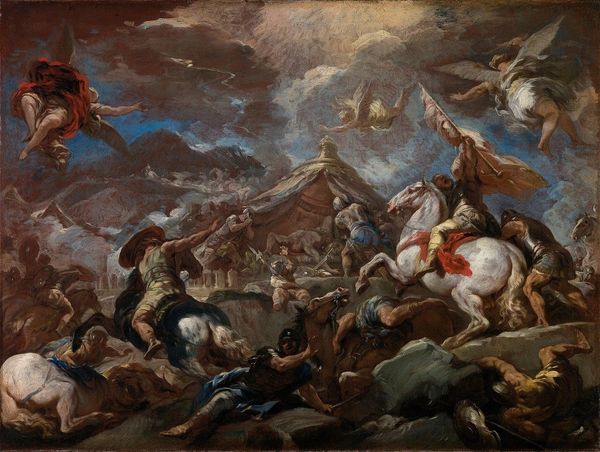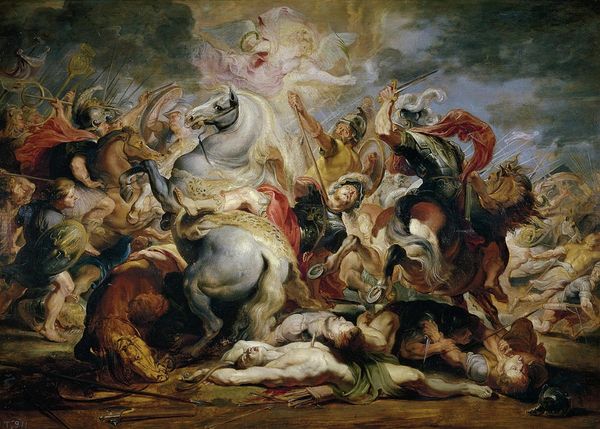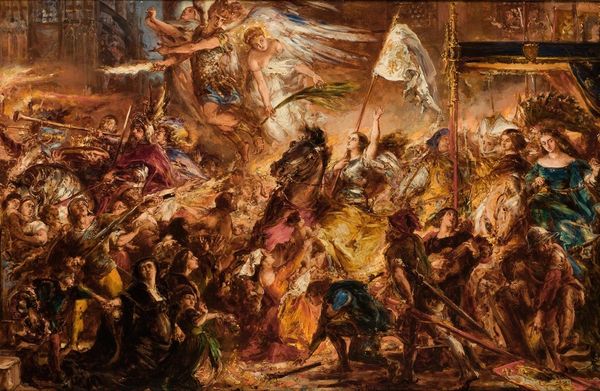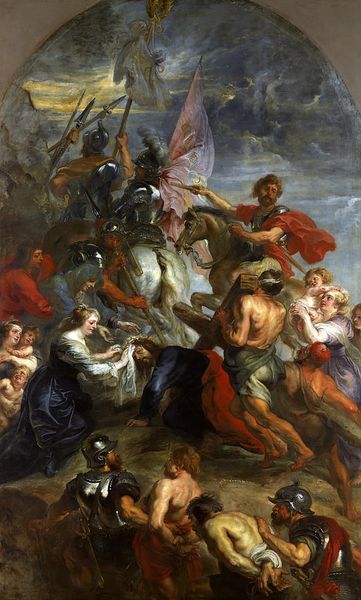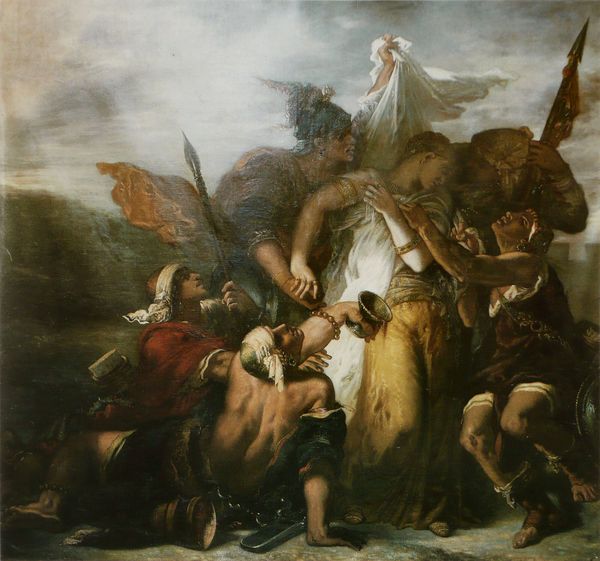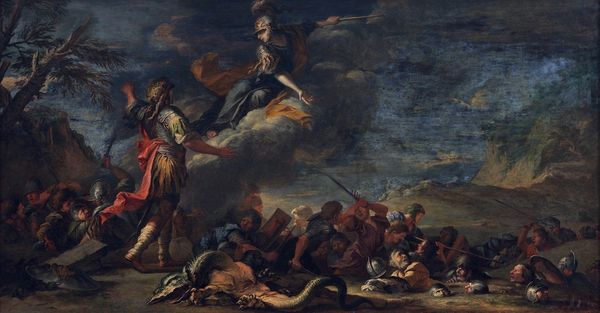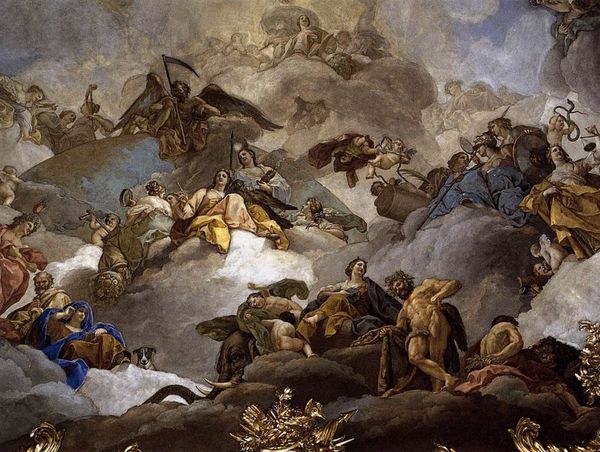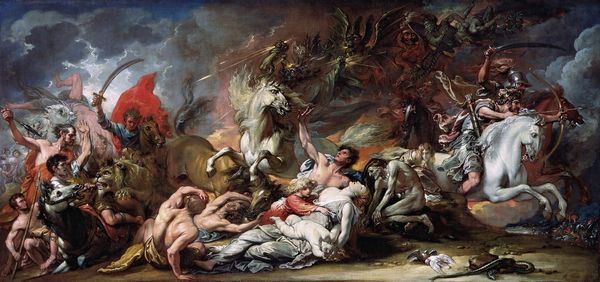
oil-paint
#
allegory
#
baroque
#
fantasy art
#
oil-paint
#
landscape
#
figuration
#
oil painting
#
mythology
#
history-painting
Copyright: Public Domain: Artvee
Peter Paul Rubens painted "The Fall of Phaeton" to illustrate the classical myth. The dominant symbol is the chariot, careening out of control, representing unchecked ambition and its catastrophic consequences. The motif of the falling figure, here Phaeton, appears throughout art history, echoing the hubris and inevitable downfall found in stories like Icarus. Even in religious contexts, the fall of Lucifer mirrors this archetype, symbolizing rebellion against divine order. Consider how the image of the falling body engages our deepest fears of losing control, triggering primal anxieties about mortality and the fragility of existence. The chaotic composition and dynamic movement further amplify the emotional impact, creating a visceral experience for the viewer. The fall, whether literal or metaphorical, continues to haunt our collective consciousness, resurfacing in literature, art, and even our daily lives as a potent reminder of the consequences of overreach and the enduring human struggle for balance.
Comments
No comments
Be the first to comment and join the conversation on the ultimate creative platform.
